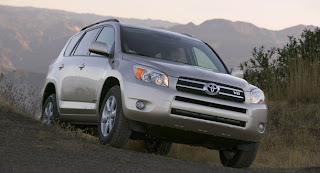 Even as fuel prices slide back down to pre-crunch levels, the automotive industry knows it's only a temporary respite and continues its gear-up for a new layer of premium small cars. On the German front, BMW is thought to be working on a sub-1-series mini car, Daimler already has its Smart, and soon Audi will join the club with its own fuel-sipping urban warrior.
Even as fuel prices slide back down to pre-crunch levels, the automotive industry knows it's only a temporary respite and continues its gear-up for a new layer of premium small cars. On the German front, BMW is thought to be working on a sub-1-series mini car, Daimler already has its Smart, and soon Audi will join the club with its own fuel-sipping urban warrior.The latest reports indicate the car will be based around the same platform as VW's up, and will do battle with the likes of Ford's Ka, Toyota iQ and the Fiat 500. The car is expected to be called the E1 and it is to be the entry to a range of new ‘ecological’ models, which will span everything from minicars to performance models.
Power will come from a 600cc turbocharged two-cylinder engine in either petrol or diesel guises. The small engines will certainly be underpowered for extended highway use, but with CO2 emissions under 100g/km and about 80mpg (2.9L/100km) fuel efficiency, according to AutoExpress, the E1 will be an easy to operate, low-tax tool for getting around any major city. An electric powertrain is also being considered, but as yet no details on its capabilities have surfaced.
Positioned below the A1, the E1 would also get a 1.2L three-cylinder, which would be more highway-capable than its two-pot brethren. Nevertheless, the up! based vehicle will still be primarily targeted at younger, affluent, urban audiences with an emphasis on technology and style.
The fact that so much of the Audi city car's competition is gearing up for U.S. sale and/or production hints that the E1 could be sold in America as well, though poor exchange rates, high transport costs and a generally weak economy could conspire against such a decision. Nevertheless, given the expected production time frame, Audi should have several years to makes its decision.
While the VW version of the up! will be hitting the streets in 2010, the Audi variant will have to wait a while, and is not expected until late 2011. Production will be handled at VW’s plant in Bratislava, Slovakia, alongside the up! version as well as Skoda and Seat variants.









.bmp)









 The proposed alliance between Fiat and Chrysler still hasn’t been finalized and with the government’s deadline for restructuring falling at the end of this month dealers understandably are nervous. Add a looming bankruptcy to the mix and stress levels for most dealers will likely be going through the roof. The show off may settle tensions a little and offer some hope.
The proposed alliance between Fiat and Chrysler still hasn’t been finalized and with the government’s deadline for restructuring falling at the end of this month dealers understandably are nervous. Add a looming bankruptcy to the mix and stress levels for most dealers will likely be going through the roof. The show off may settle tensions a little and offer some hope.






























